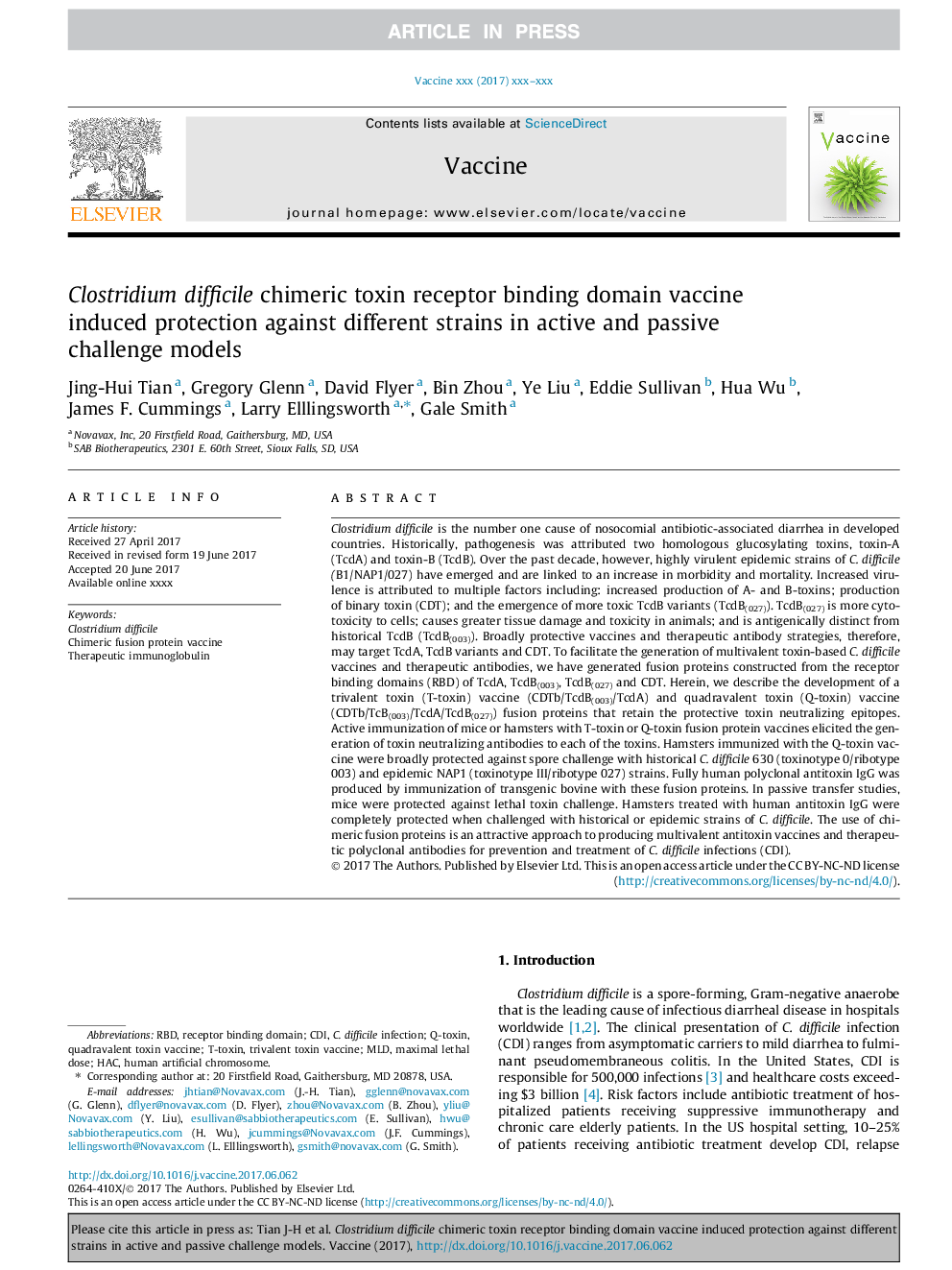| کد مقاله | کد نشریه | سال انتشار | مقاله انگلیسی | نسخه تمام متن |
|---|---|---|---|---|
| 5536425 | 1402289 | 2017 | 9 صفحه PDF | دانلود رایگان |
عنوان انگلیسی مقاله ISI
Clostridium difficile chimeric toxin receptor binding domain vaccine induced protection against different strains in active and passive challenge models
ترجمه فارسی عنوان
واکسن دامنه اتصال به گیرنده سم زدایی کلستریدیوم فسفیلد دچار کمبود القاء شده در برابر انواع مختلفی در مدل های چالش های فعال و غیر فعال
دانلود مقاله + سفارش ترجمه
دانلود مقاله ISI انگلیسی
رایگان برای ایرانیان
کلمات کلیدی
موضوعات مرتبط
علوم زیستی و بیوفناوری
ایمنی شناسی و میکروب شناسی
ایمونولوژی
چکیده انگلیسی
Clostridium difficile is the number one cause of nosocomial antibiotic-associated diarrhea in developed countries. Historically, pathogenesis was attributed two homologous glucosylating toxins, toxin-A (TcdA) and toxin-B (TcdB). Over the past decade, however, highly virulent epidemic strains of C. difficile (B1/NAP1/027) have emerged and are linked to an increase in morbidity and mortality. Increased virulence is attributed to multiple factors including: increased production of A- and B-toxins; production of binary toxin (CDT); and the emergence of more toxic TcdB variants (TcdB(027)). TcdB(027) is more cytotoxicity to cells; causes greater tissue damage and toxicity in animals; and is antigenically distinct from historical TcdB (TcdB(003)). Broadly protective vaccines and therapeutic antibody strategies, therefore, may target TcdA, TcdB variants and CDT. To facilitate the generation of multivalent toxin-based C. difficile vaccines and therapeutic antibodies, we have generated fusion proteins constructed from the receptor binding domains (RBD) of TcdA, TcdB(003), TcdB(027) and CDT. Herein, we describe the development of a trivalent toxin (T-toxin) vaccine (CDTb/TcdB(003)/TcdA) and quadravalent toxin (Q-toxin) vaccine (CDTb/TcB(003)/TcdA/TcdB(027)) fusion proteins that retain the protective toxin neutralizing epitopes. Active immunization of mice or hamsters with T-toxin or Q-toxin fusion protein vaccines elicited the generation of toxin neutralizing antibodies to each of the toxins. Hamsters immunized with the Q-toxin vaccine were broadly protected against spore challenge with historical C. difficile 630 (toxinotype 0/ribotype 003) and epidemic NAP1 (toxinotype III/ribotype 027) strains. Fully human polyclonal antitoxin IgG was produced by immunization of transgenic bovine with these fusion proteins. In passive transfer studies, mice were protected against lethal toxin challenge. Hamsters treated with human antitoxin IgG were completely protected when challenged with historical or epidemic strains of C. difficile. The use of chimeric fusion proteins is an attractive approach to producing multivalent antitoxin vaccines and therapeutic polyclonal antibodies for prevention and treatment of C. difficile infections (CDI).
ناشر
Database: Elsevier - ScienceDirect (ساینس دایرکت)
Journal: Vaccine - Volume 35, Issue 33, 24 July 2017, Pages 4079-4087
Journal: Vaccine - Volume 35, Issue 33, 24 July 2017, Pages 4079-4087
نویسندگان
Jing-Hui Tian, Gregory Glenn, David Flyer, Bin Zhou, Ye Liu, Eddie Sullivan, Hua Wu, James F. Cummings, Larry Elllingsworth, Gale Smith,
